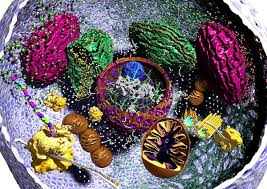
Researchers at the Agharkar Research Institute (ARI), Pune an autonomous institute under the Department of Science & Technology have developed a new process for the synthesis of quantum efficient and biocompatible quantum dots (QDs) used in capturing images of cellular organelles and processes within visible wavelength ranges across the electromagnetic spectrum.
Bioimaging applications such as visualization of cellular organelles, tracking cellular processes, etc. rely on the traditional fluorophores which are fluorescent chemical compounds that can re-emit light upon excitation.
These fluorophores are vulnerable to photobleaching, have low signal intensity, and overlapping spectra which restrict their use, particularly in multispectral bioimaging.
Quantum Dots overcomes the issues faced in traditional fluorophores.
The synthesized QDs were rendered biocompatible by coating with silicone. The coating provides biocompatibility, enhanced quantum efficiency, and photostability.
The method could make industry viable by automation and could be scaled-up in the future.
This will pave the way for cost-efficient production of monodispersed, quantum efficient, photostable, and biocompatible quantum dots, that might serve as an excellent alternative to traditional fluorophores.





